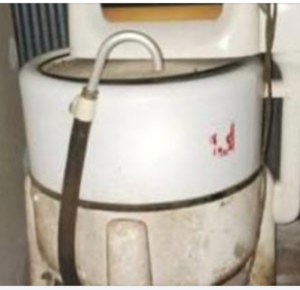At seventeen, I was still grappling with the grief of losing my grandpa. He had been a central figure in my life, nurturing my passion for cars and teaching me everything I knew about engines. When he passed away at 82, his absence left a void that felt insurmountable. My mom’s sudden announcement about his death was a crushing blow, but we managed to get through it together.
Among the few possessions my grandpa left behind was his cherished vintage car — a 1966 Ford Mustang Fastback. To me, it wasn’t just a car; it was a tangible piece of my grandpa’s legacy. He’d often tell stories about the car’s history and its importance in his life. The car had always been his pride and joy, and by extension, it became mine.
As time went on, my family faced financial difficulties. My mom, who worked night shifts to support us, struggled to keep everything afloat. One day, she sat me down with a heavy heart and told me that we needed to sell the Mustang to make ends meet. The thought of parting with the car felt like losing a piece of my grandpa all over again, but I knew we needed the money. Reluctantly, I agreed.
The sale of the Mustang was swift. It was bought by a wealthy collector who seemed to appreciate its historical value. The transaction, while necessary, left me with a deep sense of regret. I pursued my engineering career, driven by my grandpa’s influence, but the Mustang remained a symbol of what I had lost.
Years passed, and I established myself as an engineer. Despite my professional success, I always felt a pang of nostalgia when I thought about the Mustang. One day, while scrolling through a classic car auction website, I stumbled upon the very same 1966 Ford Mustang Fastback — the same one my grandpa had owned. It was up for auction again.
A surge of excitement and determination took over me. I decided to buy back the Mustang, not just to reclaim a piece of my grandpa’s memory but to reconnect with a part of my past that had always been dear to me. I managed to secure the car, and after a few weeks of meticulous restoration work, it was as good as new.
When I finally brought the car home, I noticed something unusual. As I was cleaning the glove compartment, I found a hidden compartment behind the panel. Inside was an old leather-bound journal and a small, intricately carved wooden box.
The journal was filled with my grandpa’s handwritten notes and sketches. As I read through the entries, I discovered that my grandpa had been working on a secret project for years. The journal detailed plans for a revolutionary engine design — something he never had the chance to fully develop. The wooden box contained blueprints and various small parts related to the project.
I was stunned. My grandpa had left behind a legacy much larger than I had ever imagined. The engine design was innovative and had the potential to make significant contributions to automotive engineering. This revelation was a profound moment of connection with my grandpa. His passion for cars and engineering had not only shaped my career but had also left me with a remarkable gift.
With this newfound treasure, I decided to honor my grandpa’s memory by bringing his secret project to life. I spent years perfecting the engine design, guided by his notes and my own expertise. The project became a significant milestone in my career, and I was able to share it with the world, ensuring that my grandpa’s legacy continued in a way he had always dreamed.
Buying back the Mustang and discovering my grandpa’s hidden secret became a turning point in my life. It wasn’t just about reclaiming a piece of my past; it was about uncovering the depth of my grandpa’s influence and continuing his work. The Mustang, once a symbol of loss, transformed into a testament to the enduring impact of family and the power of legacy.





